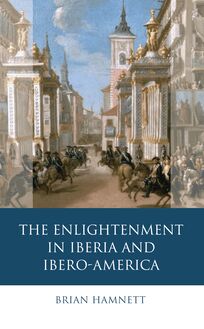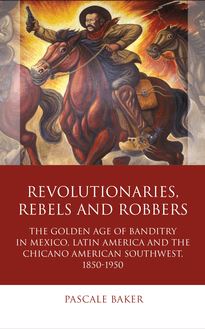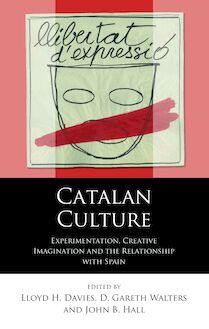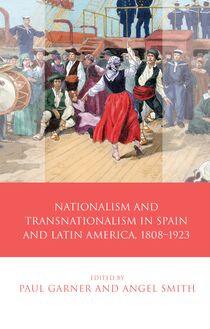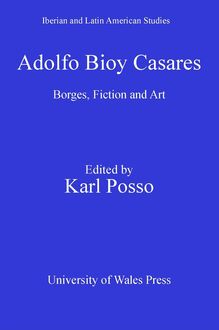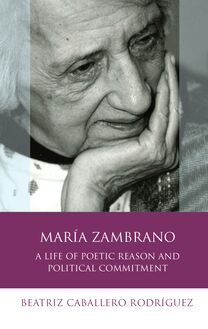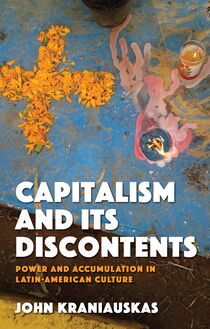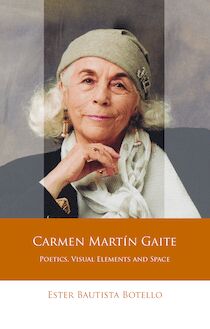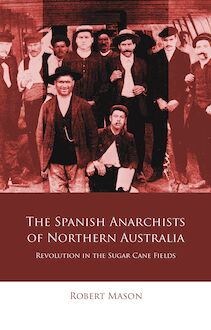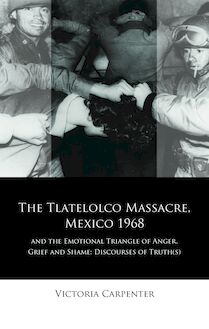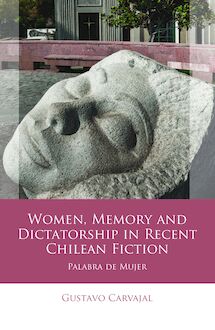-
 Univers
Univers
-
 Ebooks
Ebooks
-
 Livres audio
Livres audio
-
 Presse
Presse
-
 Podcasts
Podcasts
-
 BD
BD
-
 Documents
Documents
-
- Cours
- Révisions
- Ressources pédagogiques
- Sciences de l’éducation
- Manuels scolaires
- Langues
- Travaux de classe
- Annales de BEP
- Etudes supérieures
- Maternelle et primaire
- Fiches de lecture
- Orientation scolaire
- Méthodologie
- Corrigés de devoir
- Annales d’examens et concours
- Annales du bac
- Annales du brevet
- Rapports de stage
La lecture à portée de main
194 pages
English
Découvre YouScribe en t'inscrivant gratuitement
Je m'inscrisDécouvre YouScribe en t'inscrivant gratuitement
Je m'inscris
Obtenez un accès à la bibliothèque pour le consulter en ligne
En savoir plus
En savoir plus
194 pages
English
Obtenez un accès à la bibliothèque pour le consulter en ligne
En savoir plus
En savoir plus

Description
The aim of this book is to engender Mexican folk art and locate women at its centre by studying the processes of creation, distribution, and consumption, as well as examining iconographic aspects, and elements of class and ethnicity, from the perspective of gender. The author will demonstrate that the topic provides unique insights into Mexican culture, and has enormous relevance within and without the country, given the fact that much folk art is made for the United States and Europe, either in terms of the tourists who buy it on coming to Mexico, or that which is exported.
Folk Art and some of its Myths Women and Votive Paintings Judas was not a Woman, but - Fantastic Arts: Alebrijes and Ocumichos Monsters of a Thousand Colors Laughing Little Devils 'High' Art in Ocumicho Frida Kahlo on a Visit to Ocotlan: 'The Painting's One Thing, the Clay's Another' The Paintings on the Sarapes of Teotitlan From Humble Rag Dolls to Zapatistas Embroiderers of Miracles
Folk Art and some of its Myths Women and Votive Paintings Judas was not a Woman, but - Fantastic Arts: Alebrijes and Ocumichos Monsters of a Thousand Colors Laughing Little Devils 'High' Art in Ocumicho Frida Kahlo on a Visit to Ocotlan: 'The Painting's One Thing, the Clay's Another' The Paintings on the Sarapes of Teotitlan From Humble Rag Dolls to Zapatistas Embroiderers of Miracles
Sujets
Informations
| Publié par | University of Wales Press |
| Date de parution | 15 décembre 2013 |
| Nombre de lectures | 0 |
| EAN13 | 9781783160747 |
| Langue | English |
| Poids de l'ouvrage | 4 Mo |
Informations légales : prix de location à la page 0,0650€. Cette information est donnée uniquement à titre indicatif conformément à la législation en vigueur.
Extrait
Iberian and Latin American Studies
Women in Mexican Folk Art Of Promises, Betrayals, Monsters and Celebrities
Eli Bartra
University of Wales Press
IBERIAN AND LATIN AMERICAN STUDIES
Women in Mexican Folk Art
Series Editors Professor David George (Swansea University) Professor Paul Garner (University of Leeds)
Editorial Board David Frier (University of Leeds) Laura Shaw (University of Liverpool) Gareth Walters (Swansea University) Rob Stone (Swansea University) David Gies (University of Virginia) Catherine Davies (University of Nottingham) Richard Cleminson (University of Leeds)
IBERIAN AND LATIN AMERICAN STUDIES
Women in Mexican Folk Art
Of Promises, Betrayals, Monsters and Celebrities
ELI BARTRA
UNIVERSITY OF WALES PRESS CARDIFF 2011
© Eli Bartra, 2011
All rights reserved. No part of this book may be reproduced in any material form (including photocopying or storing it in any medium by electronic means and whether or not transiently or incidentally to some other use of this publication) without the written permission of the copyright owner except in accordance with the provisions of the Copyright, Designs and Patents Act 1988. Applications for the copyright owner’s written permission to reproduce any part of this publication should be addressed to the University of Wales Press, 10 Columbus Walk, Brigantine Place, Cardiff, CF10 4UP. www.uwp.co.uk
British Library CIP A catalogue record for this book is available from the British Library.
ISBN 978–0–7083–2347–2 (hardback) 978–0–7083–2364–9 (paperback) e-ISBN 978–0–7083–2348–9
The right of Eli Bartra to be identified as author of this work has been asserted in accordance with sections 77, 78 and 79 of the Copyright, Designs and Patents Act 1988.
Photographs by Irma Villalobos Translation by Christopher Follett and Richard Thomson
Typeset by Marie Doherty Printed by Gutenberg Press, Tarxien, Malta
Contents
Series Editors’ Foreword Acknowledgements Introduction Chapter One: Folk Art and some of its Myths Chapter Two: Women and Votive Paintings Chapter Three: Judas was not a Woman, but… Chapter Four: Fantastic Art:AlebrijesandOcumichosChapter Five: Frida Kahlo on a Visit to Ocotlán: ‘The Painting’s One Thing, the Clay’s Another’ Chapter Six: The Paintings on the Serapes of Teotitlán Chapter Seven: From Humble Rag Dolls toZapatistasChapter Eight: Embroiderers of Miracles Epilogue Notes Bibliography Index
vi vii 1 11 27 47 67
97 115 127 137 151 159 167 177
Series Editors’ Foreword
Over recent decades the traditional ‘languages and literatures’ model in Spanish departments in universities in the United Kingdom has been superceded by a contextual, interdisciplinary and ‘area studies’ approach to the study of the culture, history, society and politics of the Hispanic and Lusophone worlds – categories that extend far beyond the confines of the Iberian Peninsula, not only in Latin America but also to Spanish-speaking and Lusophone Africa. In response to these dynamic trends in research priorities and curriculum development, this series is designed to present both dis-ciplinary and interdisciplinary research within the general field of Iberian and Latin American Studies, particularly studies that explore all aspects ofCultural Production (inter alia literature, film, music, dance, sport) in Spanish, Portuguese, Basque, Catalan, Galician and indigenous languages of Latin America. The series also aims to publish research in theHistory and Politicsof the Hispanic and Lusophone worlds, at the level of both the region and the nation-state, as well as onCultural Studiesexplore the shifting terrains of gender, that sexual, racial and postcolonial identities in those same regions.
Acknowledgements
The field work for the chapter onocumichos took place in 1991 and 1992, that forFriditasserapes in August 1995, April 1996 and and December 2006. I did the field work on the Judases from 1993 to 2009,alebrijes in 1992, 2004 and 2009, Zapatista dolls in 1998 and 2009; in San Miguel de Allende in 2002 and Zacatecas in 2008 and 2009. My thanks are due to all the people who told me about their experiences in Ocumicho, Ocotlán de Morelos, Teotitlán del Valle, San Miguel de Allende, Tacoaleche, as well as Mexico City, for all the time they devoted to me. Thanks are also due to John, as always, for the full stops and com-mas in both the text and in my life, and much else besides. To my mother Anna Murià, unfortunately no longer among us today, who as on other occasions read and corrected the original with love and patience. To ‘Curare’, for financial assistance, and to the members of the seminar for their devastating, but useful, suggestions and corrections. I am also grateful to the members of my research area on ‘Women, Identity and Power’ of the Department of Politics and Culture at the Universidad Autónoma Metropolitana-Xochimilco for their comments, in particular to Mary Goldsmith for her acute observations. To Sam Abrams, I am also indebted for his careful reading of the original, red pencil in hand, and his invaluable comments.
Map of Mexico today. Reworked by Isis Ortiz.
-
 Univers
Univers
-
 Ebooks
Ebooks
-
 Livres audio
Livres audio
-
 Presse
Presse
-
 Podcasts
Podcasts
-
 BD
BD
-
 Documents
Documents
-
Jeunesse
-
Littérature
-
Ressources professionnelles
-
Santé et bien-être
-
Savoirs
-
Education
-
Loisirs et hobbies
-
Art, musique et cinéma
-
Actualité et débat de société
-
Jeunesse
-
Littérature
-
Ressources professionnelles
-
Santé et bien-être
-
Savoirs
-
Education
-
Loisirs et hobbies
-
Art, musique et cinéma
-
Actualité et débat de société
-
Actualités
-
Lifestyle
-
Presse jeunesse
-
Presse professionnelle
-
Pratique
-
Presse sportive
-
Presse internationale
-
Culture & Médias
-
Action et Aventures
-
Science-fiction et Fantasy
-
Société
-
Jeunesse
-
Littérature
-
Ressources professionnelles
-
Santé et bien-être
-
Savoirs
-
Education
-
Loisirs et hobbies
-
Art, musique et cinéma
-
Actualité et débat de société
- Cours
- Révisions
- Ressources pédagogiques
- Sciences de l’éducation
- Manuels scolaires
- Langues
- Travaux de classe
- Annales de BEP
- Etudes supérieures
- Maternelle et primaire
- Fiches de lecture
- Orientation scolaire
- Méthodologie
- Corrigés de devoir
- Annales d’examens et concours
- Annales du bac
- Annales du brevet
- Rapports de stage
Signaler un problème
YouScribe
Le catalogue
Le service
© 2010-2024 YouScribe
